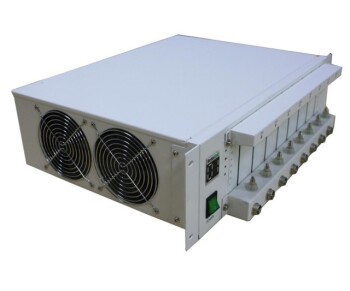An elemental analyzer is a sophisticated instrument used to determine the elemental composition of a sample, both qualitatively and quantitatively.
These analyzers are essential in various scientific fields, including chemistry, materials science, environmental testing, and food testing.
They help identify the presence of elements or ions in a substance and quantify the relationship between the quantities of each component.
Elemental analyzers are indispensable in laboratory settings for tasks such as raw material acceptance, furnace analysis, and finished product inspection.
5 Key Points Explained: What is an Element Analyzer?

1. Definition and Purpose of Elemental Analyzers
Definition: An elemental analyzer is an instrument designed to identify and quantify the elements present in a sample.
It can determine both the presence of elements and their concentrations.
Purpose: These analyzers are crucial for understanding the composition of materials, ensuring product quality, and complying with safety and environmental standards.
2. Types of Elemental Analyzers
Common Analyzers:
- Ultraviolet/Visible Spectrophotometer (UV): Uses Beer's law to determine sample concentration based on absorbance.
- Atomic Absorption Spectrophotometer (AAS): Measures the absorption of light by atoms in the gas phase.
- Atomic Fluorescence Spectrophotometer (AFS): Quantifies the intensity of fluorescence emitted by atoms under radiation stimulation.
- Atomic Emission Spectrophotometer (AES): Analyzes the emission of light from atoms excited to higher energy states.
- Inductively Coupled Plasma Mass Spectrometer (ICP-MS): Ionizes sample components to analyze their mass-to-charge ratios.
- X-ray Fluorescence Spectrophotometer (XRF): Detects secondary X-rays emitted by elements in a sample when excited by X-rays.
Specialized Analyzers:
- Handheld XRF Analyzers: Portable devices like the XRF 900S, which offer high accuracy, fast response, and durability for fieldwork.
3. Analysis Methods and Principles
- UV/Visible Spectrophotometry: Utilizes Beer's law to relate absorbance to sample concentration.
- AAS and AFS: Both methods involve the absorption and emission of light by atoms, with AAS focusing on absorption and AFS on fluorescence.
- AES: Relies on the emission of light from excited atoms, providing a unique spectrum for each element.
- ICP-MS: Ionizes sample components and measures their mass-to-charge ratios for detailed elemental analysis.
- XRF: Excites elements in a sample with X-rays and measures the emitted secondary X-rays to determine elemental composition.
4. Advantages and Applications
- High Sensitivity and Accuracy: Many elemental analyzers offer high sensitivity, allowing for the detection of elements at very low concentrations.
- Wide Range of Applications: From environmental testing and materials science to food safety and pharmaceutical quality control, elemental analyzers are versatile tools.
- Portability: Handheld analyzers like the XRF 900S provide on-site analysis capabilities, enhancing efficiency and reducing the need for sample transport to laboratories.
5. Challenges Addressed by Portable Analyzers
- Traditional Methods Limitations: Traditional methods like AAS and ICP require specialized equipment and trained personnel, making them less accessible and more time-consuming.
- Portable Solutions: Portable elemental analyzers overcome these challenges by offering ease of use, rapid analysis, and the ability to perform tests in various environments without destroying samples.
In summary, elemental analyzers are vital tools in scientific research and industrial applications, providing critical insights into the composition of materials.
Their diverse types and methods enable precise and efficient analysis, contributing to advancements in various fields.
Continue exploring, consult our experts
Discover how KINTEK SOLUTION's elemental analyzers can revolutionize your lab's efficiency.
With cutting-edge technology and a wide array of specialized tools, our analyzers offer unmatched sensitivity, accuracy, and portability.
Unlock the full potential of your materials with our state-of-the-art solutions.
Don't settle for less – upgrade your lab today and elevate your research to new heights.
Get in touch with our experts to explore our range and find the perfect fit for your needs.
Act now and take the first step towards precision analysis!












